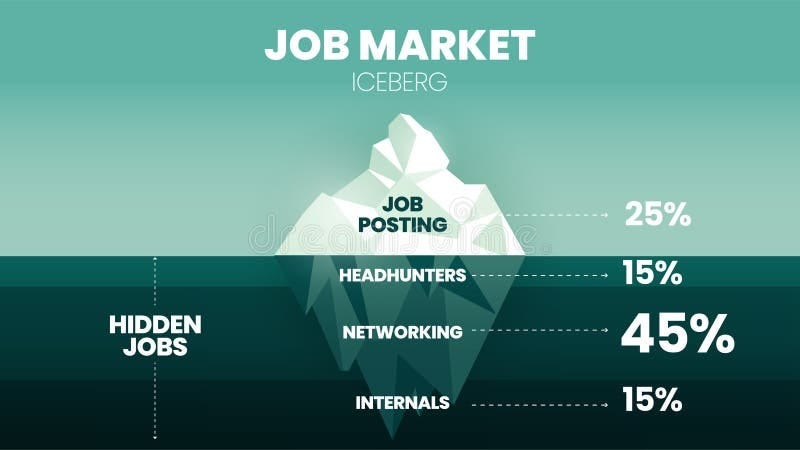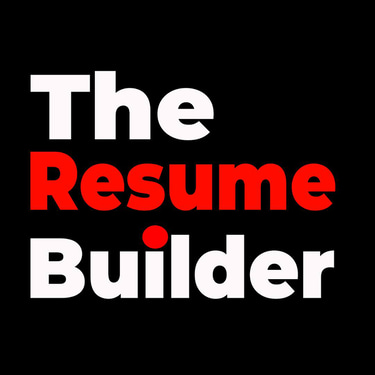Unlock Hidden Jobs with Resume
Creating an ATS-compliant resume is just the first step. To land mid or senior-level roles, professionals must strategically use their resume to access the hidden job market beyond public listings.
Abhishek Kundu
6/8/20256 min read


You’ve built a perfect resume. It’s tailored for the job you want. It’s clean, well-structured, and ATS-compliant. But weeks have passed and you still haven’t heard back from employers. You’re starting to wonder: Is my resume even getting read?
Here’s the hard truth: in today’s job market—especially for mid-level and senior-level professionals—simply creating a great resume isn’t enough. You need to know how and where to use it, especially when it comes to the hidden job market—the roles that are never publicly advertised.
www.atsresumewriting.in
In this blog, we’ll talk about:
Why cold job applications often fail.
What the hidden job market is and why it matters.
How to use your resume strategically to reach decision-makers.
Real-life examples to help you understand how this works.
Let’s break it down simply and clearly—no jargon, no fluff.
The Cold Truth About Cold Applications
Cold applying means you find a job post, hit "Apply", upload your resume, and wait.
Now here’s what usually happens:
Your resume enters a pool with hundreds (sometimes thousands) of others.
An algorithm (ATS) screens it before a human even sees it.
Even if it’s perfect, your application may never be opened—especially if the role is already halfway filled internally or through referrals.
And here's the kicker: you don’t even know if your resume was rejected by a human or a robot.
Example:
Nina, a Senior HR Manager with 15 years of experience, applied to over 60 roles on job portals. She tailored every resume. She heard back from only two—and both were automated rejections. When she reached out to one of the companies via LinkedIn, she discovered the position had already been filled internally before it was posted. She was unknowingly applying to a role that no longer existed.
What Is the Hidden Job Market?
The “hidden job market” refers to roles that are filled without ever being advertised publicly. These jobs are often filled through:
Internal promotions
Referrals
Direct approaches from candidates
Recruiters reaching out to their personal networks
It’s estimated that up to 70% of mid-to-senior level positions are never posted online. That’s a huge portion of the market you miss out on if all you’re doing is applying through job boards.
Example:
Rajiv, a mid-level operations manager, was laid off during restructuring. He started cold applying immediately but saw no results. He later learned from a former colleague that his dream company was hiring—but they were doing so quietly through internal referrals. By reaching out to a former employee of that company and expressing his interest, Rajiv got his foot in the door and eventually landed the job.
Why ATS Compliance Still Matters—But Only as a Tool
Don’t misunderstand—having an ATS-compliant resume is still necessary. It's the basic hygiene of job searching. Without it, your resume might never pass the screening stage when you do apply online.
But think of it like this:
An ATS resume is like a passport. It lets you travel, but it doesn’t buy you the ticket.
It opens the door, but it doesn’t walk you through it.
Once your resume is ready, your real work begins: positioning yourself in the job market, connecting with the right people, and sharing your story effectively.
How to Use Your Resume for the Hidden Job Market
Let’s talk strategy. You’ve got your resume. Here’s how to use it intentionally:
1. Start with Your Network—But Go Beyond Friends
Most people assume "networking" means messaging friends or ex-colleagues. That’s just step one.
Dig deeper. Reach out to:
Alumni from your college who work in your target companies
People in similar roles in competitor firms
Managers who previously worked in the kind of position you want
Send them a personalized message. Not a “Hey, I need a job” message—but a genuine introduction. Share what you’ve been doing and what you’re exploring.
How to use your resume here:
Attach it only after the person responds. Don’t dump it in your first message. Keep it relevant. Say something like:
“Would you be open to reviewing my profile and letting me know if you think there’s any potential fit? I’m happy to share a brief version of my resume if that helps.”
Example:
Deepa, a finance professional, messaged a VP from her previous industry. She simply asked for a 10-minute call to understand how the VP’s company was structured. A week later, the VP told her that a role might open up soon and to send over her resume. That role was never posted online—but Deepa got it.
2. LinkedIn Isn’t Just for Scrolling—It’s for Strategy
Many professionals treat LinkedIn like a resume storage site. But it’s far more powerful if you use it well.
Update your profile with achievements, not just job duties.
Start commenting meaningfully on posts by leaders in your industry.
Publish a short story or experience from your professional life once a week.
Why? Because visibility leads to opportunity.
How to use your resume here:
Once people engage with your profile or message you, have a one-page version of your resume ready. This short version is perfect for informal exchanges or initial conversations.
Example:
Arun, a senior tech consultant, shared a post on LinkedIn about a project he led during the pandemic. A CTO from a startup commented on the post. Arun messaged him privately, thanked him for the engagement, and later shared a one-page version of his resume. They met over coffee, and Arun was offered a consulting opportunity.
3. Use Informational Interviews to Open Doors
An informational interview isn’t about asking for a job. It’s about learning. And when people see that you're genuinely curious about the work they do, they open up—and often remember you later when something comes up.
Steps:
Identify 10-12 companies you're interested in.
Find mid-to-senior professionals working there.
Ask for 15 minutes of their time to understand what their role or company is like.
Most people like talking about their work—it makes them feel valued. And many will naturally ask to see your resume.
How to use your resume here:
Tailor it slightly before the meeting to reflect what you think aligns with that company or department. After the meeting, thank them and send the resume—not asking for a job, but saying:
“Thanks again for the time. I learned a lot from our chat. In case something opens up in the future, here’s my profile for reference.”
Example:
Priya, a marketing head, did 14 such calls over two months. By her fifth call, someone offered to forward her resume to HR. That connection turned into an interview—and later, a job.
4. Target Small and Mid-Sized Companies
These firms often skip formal postings. They don’t have big recruitment budgets. Instead, they hire quietly through networks, referrals, or speculative applications.
Don’t just go after the big brands. Look up:
Startups funded recently
Companies expanding to new cities
Firms listed in industry directories
Send them a well-written email with your resume attached.
How to use your resume here:
Don’t send the same generic resume everywhere. Pick the top 10 companies. Research their pain points. Customize your opening paragraph. Then attach your resume showing relevant experience.
Example:
Sameer, a logistics manager, found a mid-sized e-commerce firm opening a warehouse in his city. There were no job postings. He wrote to their operations head, explained how he had set up similar facilities before, and attached his resume. A week later, he was invited to help with their launch strategy—and eventually offered a full-time position.
The Emotional Reality: Rejections Without Feedback
One of the hardest parts of job searching is not knowing why you were rejected. Was it your resume? Were you overqualified? Or did no one even see your application?
That’s why tapping into the hidden job market matters. You deal directly with people, not portals. You get real feedback, even if it’s a no. And often, you get a second chance.
What NOT to Do
To wrap things up, here are some common traps to avoid:
Don’t mass email your resume. It shows zero effort and gets deleted fast.
Don’t rely on referrals only from people you know well. Polite, strategic cold outreach can work if done thoughtfully.
Don’t ghost your network. Check in, follow up gently, and stay visible.
Don’t give up after 10 rejections. It’s a process—and often, it’s the 11th attempt that works.
Creating an ATS-compliant resume is your starting point—not your endgame.
If you’re a mid or senior-level professional, your next opportunity is probably not waiting on a job portal. It’s behind a conversation, a coffee, or a connection you haven’t made yet.
Use your resume as a tool to open real doors—not just to drop into digital boxes.
Start today. Reach out to someone. Share your story. Ask a question. Be visible. Because in the hidden job market, visibility beats perfection.
Want help crafting a resume that not only passes ATS but also starts conversations?
Let’s talk @ +918981360947 Visit us @ www.atsresumewriting.in
Expert in
Professional Resume Writing Company in Kolkata, West Bengal
Professional Resume Writer in Kolkata, West Bengal
ATS Resume Writing in Kolkata, West Bengal
GET IN TOUCH
theresumebuilderindia@gmail.com
+91 89813 60947
© 2015. All rights reserved by Abhishek Kundu Resume Writing Co.
abhishek@atsresumewriting.in
